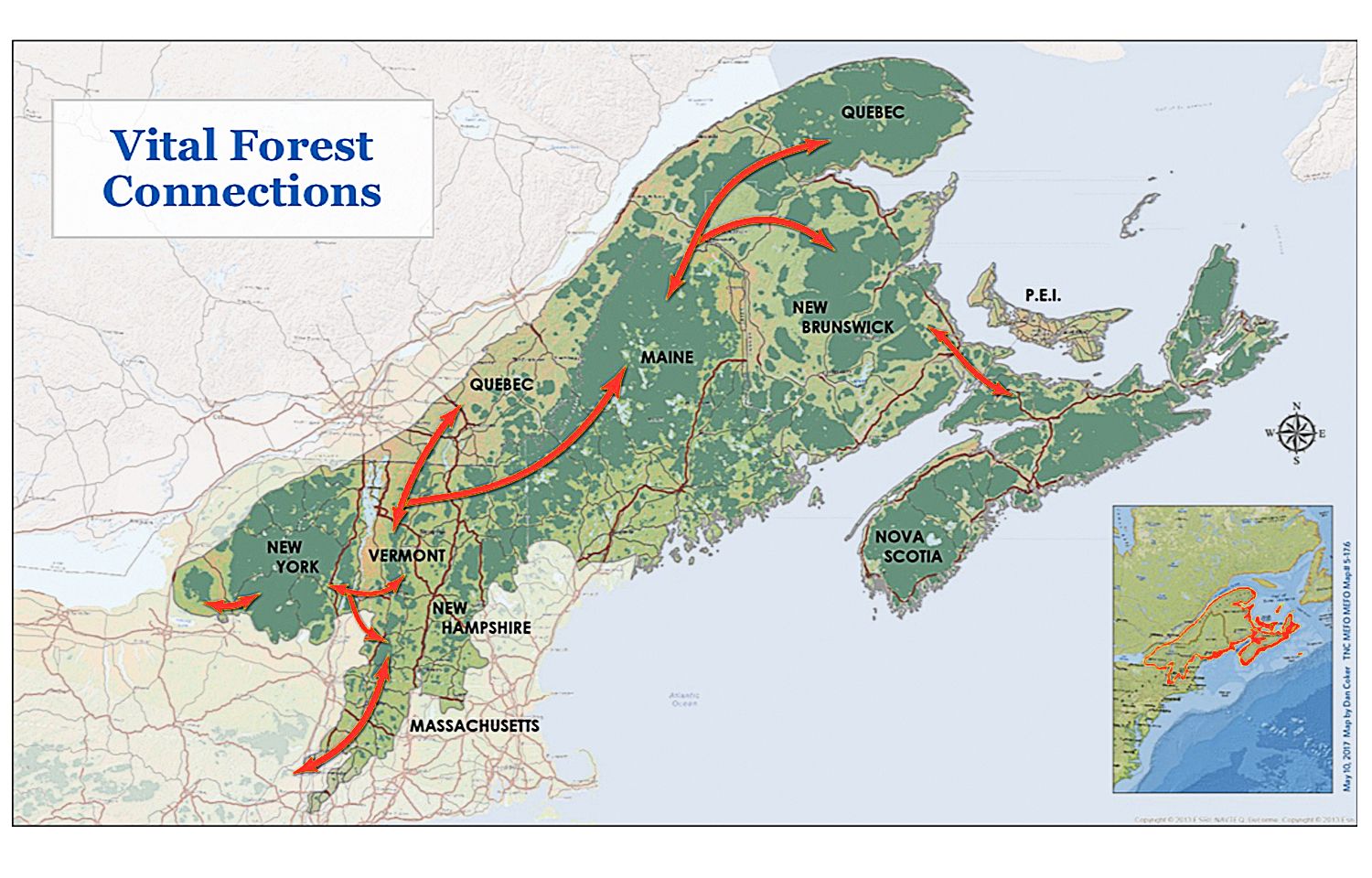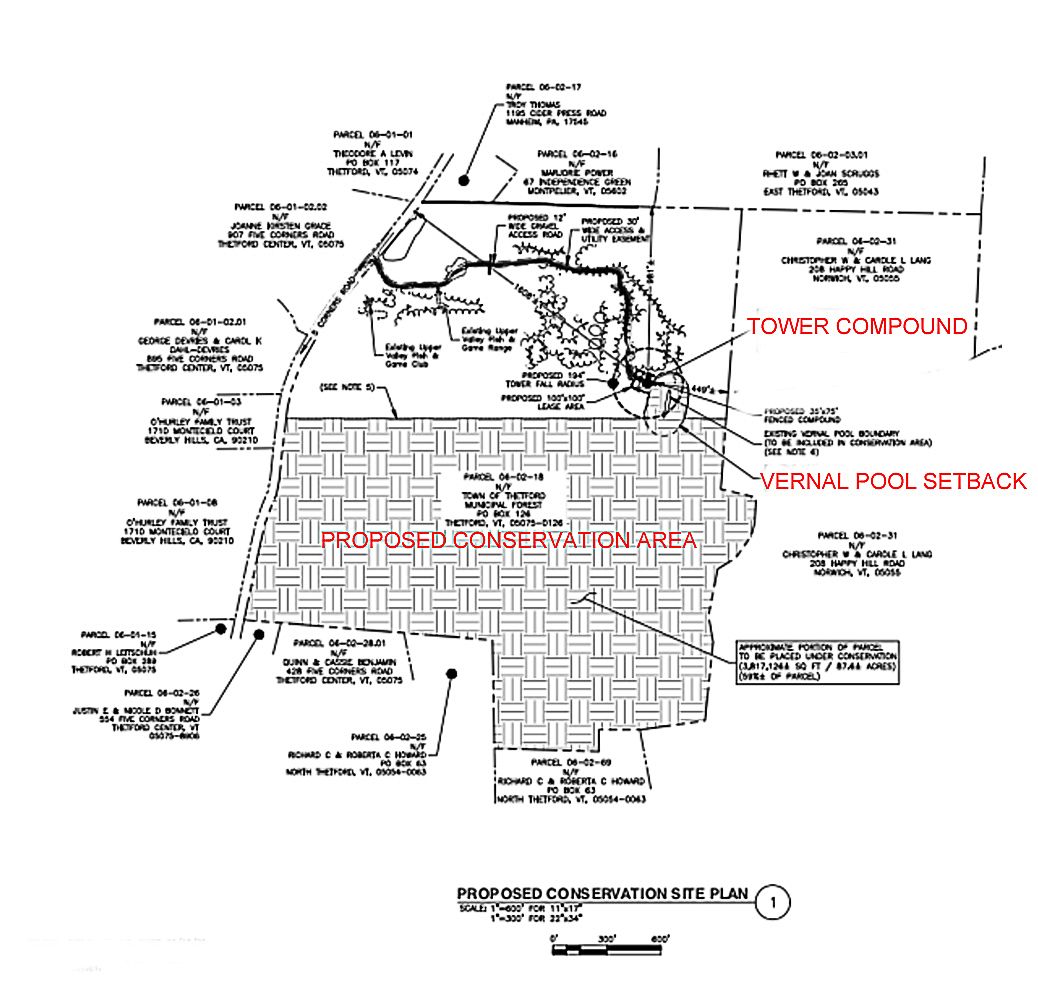Conservation of Town Forest land is well-deserved
AT&T predicts the tower could be complete by spring of 2022.

It took the proposed siting of an AT&T communications tower on the Town Forest before State authorities sprang into action and declared that there were natural resources on the Thetford Town Forest that should be protected.
Not that their existence was unknown before then, at least to the Town. In 2008 the Town, through the Conservation Commission, authorized a Forest Management Plan that covered the Town Forest and three other town-owned parcels. One of the top botanists in Vermont, Brett Engstrom, walked the parcels in a grid-style pattern, recording the locations of naturally occurring plant groupings that are referred to in ecologist lingo as “natural communities.” He also noted where he discovered rare, threatened, or endangered plant species. It turned out that the Town Forest contained no less than ten distinct natural communities, three rare plants species and, on top of that, two types of ecologically important water features. There were two vernal pools. These are temporary pools that fill with snowmelt in spring and generally dry out by mid summer. Fish cannot survive in them, which makes them a safe breeding haven for amphibians whose larvae, or tadpoles, are easy fish food. Four seeps also were discovered, where water bubbles out of the ground at the foot of forested slopes at 47 degrees F year-round, creating a special microenvironment. Species that would otherwise be scant or absent in the landscape, mostly plants but also amphibians, thrive in the little-understood seep natural community.
Utilities such as AT&T’s telecommunication tower require a Certificate of Public Good (CPG) from Vermont’s Public Utilities Commission (PUC) before installation may proceed. As part of their CPG application AT&T has to submit a statement on how much, if at all, the project affects the natural resources and ecology of the site. Not to rely solely on the reporting by the biologist hired by AT&T, the VT Agency of Natural Resources (ANR) also sent a biologist, as did the Department of Fish and Wildlife. It was then that the Town Forest registered on the state’s radar.
At the landscape level, the big concern for ANR was the location of the Town Forest within a forest block that is of regional importance. Vermont lies at the crossroads of broad swaths of forested landscape that are connected and allow wildlife to move East-West from New York state though Vermont to New Hampshire and on into Maine and the Canadian maritimes. Another route runs North-South, from Massachusetts, through Vermont and up into Quebec.

This entire region is globally significant because it is the most intact temperate, broadleaf forest in the world. The large network of healthy forests, wetlands, and rivers supports a diversity of wildlife including the richest assortment of birds in the US, plus lynx, bobcats, black bears, and moose. Some mammals, like bears and moose, may have territories spanning tens of square miles and need expansive forests to roam widely. In addition, the ongoing pressure of climate change is forcing animals everywhere to move and relocate. They need connected forests to do so. Fragmentation of the forest by roads, developments, and utilities is a threat that must be minimized. Roads and developments that encroach into forest blocks degrade valuable interior forest habitat and its ecological functions by replacing interior forest birds, plants, etc. with competing “edge species.”
ANR also observed that a long, narrow vernal pool lay within 100 ft of the proposed tower site. They required AT&T to move the tower and its compound out of the 100-ft zone around the pool to reduce its impact on the pool and the natural environment “to a level that is less than undue.” The fenced compound dimensions were changed from 50 x 50 ft to 35 x 75 ft, again to keep it out of the 100-ft vernal pool zone. They also required AT&T’s contractors to protect the pool with temporary silt fencing during construction of the tower and its road, with the proviso that 1-2 ft gaps with fence overlaps be left to allow for amphibian migration, and that an amphibian corridor be provided along the fence. About seven trees, five maples and two pines, will be cut for the compound, while the road to the tower follows the existing snowmobile trail and the tree line that was established when the Town Forest was logged in 2017. The electricity line to the tower will run underground alongside the road.

ANR did not note any rare plants at the tower site. However, with respect to the diversity of natural communities, ANR required that “The Town shall permanently conserve approximately 87.6 acres within the Town Forest…. Permanent conservation shall be accomplished by the Town conveying a conservation easement… to Upper Valley Land Trust (UVLT)…. The final form of the conservation easement shall be subject to ANR approval through its Fish and Wildlife Department in advance of its conveyance by the Town.” The 87.6 acres includes all of the Town Forest south of the tower, plus the 100-ft zone of protection around the vernal pool.
UVLT has built up a backlog of work as a result of the COVID-19 pandemic, that will take many months to clear. The Land Trust will not be able to perform the steps necessary to draft the easement for the Town Forest until at least 2022. Therefore the Town and UVLT have signed a Letter of Intent agreeing to the basic terms, conditions, and a process through which the Town and UVLT will enter into a permanent conservation easement for the 87.6 acres of the Town Forest. Among other things the easement will allow some forest management and non-motorized recreation. The Upper Valley Fish and Game Club, which is in the northern portion of the Town Forest, will not be impacted by the easement.
Conservation easements do not come for free. UVLT incurs costs, such as a survey, title search, staff time, and an endowment to support yearly monitoring of the land for violation of the easement terms. Since the conservation easement is part of the package that allows AT&T to move ahead, the corporation has agreed to absorb up to $21,000 of easement expenses. That’s the cost of doing business.
If everything goes to plan, AT&T predicts the telecommunications tower could be complete by spring of 2022.
